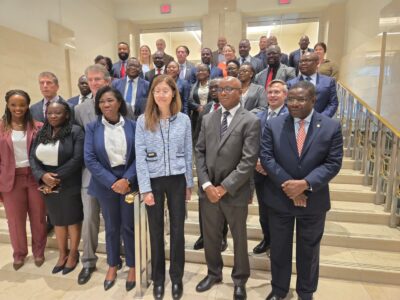In response to escalating inflationary pressures, Zambia’s Central Bank, the Bank of Zambia, has implemented a significant increase in its benchmark lending rate.
Governor Denny Kalyalya, announced the decision to raise the rate by 100 basis points to 13.5 percent from 12.5 percent during a Monetary Policy briefing held in Lusaka.
The primary objective behind this move, according to the apex bank, is to steer inflation back within the target band of between six to eight percent, thereby promoting macroeconomic stability.
Kalyalya highlighted the adverse impact of the current drought on domestic growth forecasts for 2024, particularly affecting key sectors such as agriculture and energy.
He stressed the importance of controlling inflation and addressing persistent inflationary pressures to safeguard the country’s financial stability amidst ongoing economic challenges.
Factors contributing to the inflationary trend, the bank noted, included the continued depreciation of the Kwacha against major currencies and rising prices of essential commodities, particularly food and energy.
In the first quarter of 2024, inflation surged to 13.5 percent from 12.9 percent in the previous quarter, reflecting ongoing inflationary pressures.
Governor Kalyalya emphasized that the decision to adjust the policy rate would remain contingent upon inflation outcomes, forecasts and identified risks, including those associated with financial sector stability.
“Decision on the policy rate will continue to be guided by the inflation outcomes, forecast and identified risks, including those associated with financial sector stability.
“The Bank stands ready to take appropriate action should inflation persist above the six-eight target band,” Kalyalya said.
The economic impact of these inflationary pressures has been evident in reduced economic activity, particularly in sectors heavily reliant on agriculture and manufacturing.
Growth projections for 2024 have been downgraded to 2.3 percent from the earlier forecast of 4.4 percent, primarily due to the expected adverse effects of the drought on key sectors.
Despite the current challenges, Kalyalya expressed optimism about growth prospects for 2025, citing the anticipated recovery in mining and agriculture sectors, as well as sustained expansion in ICT, financial services, and retail trade.
On the international front, Zambia’s international reserves increased to US$3.6 billion, equivalent to 3.9 months of import cover at the end of March 2024, mainly attributed to net statutory reserves.
Additionally, the Bank had purchased gold worth US$10.6 million in 2023, bringing the total to US$168.1 million since the commencement of gold purchases globally.
This strategic monetary policy adjustment reportedly underscores the Bank of Zambia’s commitment to addressing inflationary pressures, maintaining financial stability, and fostering an environment conducive to productive investment.
WARNING! All rights reserved. This material, and other digital content on this website, may not be reproduced, published, broadcast, rewritten or redistributed in whole or in part without prior express permission from ZAMBIA MONITOR.













Comments